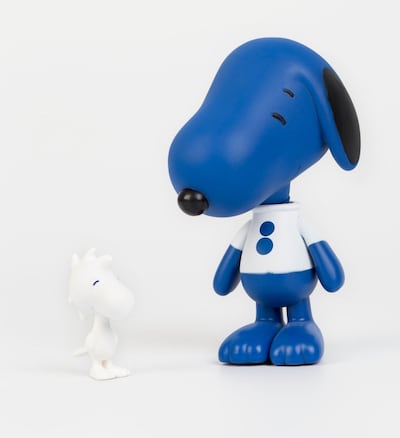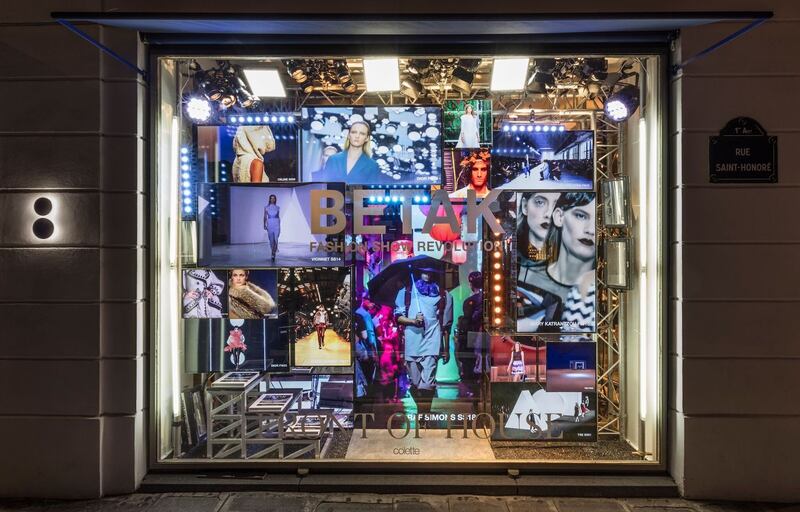
The Business of Fashion
Agenda-setting intelligence, analysis and advice for the global fashion community.

Agenda-setting intelligence, analysis and advice for the global fashion community.

PARIS, France — Along with her mother for whom the shop is named, Sarah Andelman arguably invented the concept store as we know it today with the opening of Colette on Paris' Rue Saint Honoré in 1997. Pioneering the collaborative model which was later adopted by hundreds of retailers and fashion brands all over the world, the three-story, 8,000-square-foot boutique partnered with the likes of Chanel, Saint Laurent, Hermès, Apple, Disney and Medicom Toy, approaching retail and merchandising in unique, novel ways.
“From the beginning, it was not so much about collaboration, but we wanted to bring product to the store we could not find elsewhere in France,” Andelman explains. “I always wanted to surprise our customer. It was something I loved to do — it became part of Colette.” Making product selection the foundation of the store experience led to Andelman stocking a panoply of unexpected and often irreverent products capable of stoking consumer desire time and again. Andelman’s selection at Colette offered customers the joy of discovery, which made her store a must-visit destination for those both buying and browsing, and the store’s white carrier bags, with two distinctive cobalt blue dots, ubiquitous across Paris.
The store was widely celebrated within the industry. Moments after presenting his Spring/Summer 2017 ready-to-wear collection for Chanel, Karl Lagerfeld told BoF, "I must say I admire Madame Colette and Sarah a lot. It's the only shop where I go because they have things no one else has. I buy watches, telephones, jewellery there — everything really! They have invented a formula that you can't copy easily, because there is only one Colette and her and Sarah are 200 percent involved."

Medicom Toy Colette x Snoopy | Source: Courtesy
After 20 years and having established their store as one of fashion’s global epicentres of discovery, Andelman and her mother, Colette Roussaux, chose to close its doors. Andelman announced her next move, a new consulting company called Just An Idea, at VOICES, BoF’s gathering for big thinkers, in 2017. “I am always on the hunt to discover and I am fascinated by how designers constantly surprise us — it’s not easy to do. I love to discover new creative talents, [for them to give us] a new inspiration, a new vision, and I would like to give them support to exist, to be recognised for what they do,” added Andelman.
BoF sat down with Andelman to discuss product curation in a digital age, the importance of maintaining a human element in sales and why service is too often forgotten.
Do you believe the retail industry was slow to innovate?
No, I don’t think the retail industry was slow to innovate. It’s natural — it takes time to decide the right things to do. And I would observe two different speeds of change: a fast one, which is very superficial, and continuously needs to be updated; a deeper one, longer to achieve, with a real innovation process. I think there was an important step, worldwide, right around 2000. I think it’s natural that with the emergence of online commerce, physical retail evolved and had to try new things and try to innovate and try to bring customers physically back in to stores. But I don’t attribute everything that physical retail has experienced to online disruption — at the end of the day, what counts the most is our products themselves.
How did you approach sourcing and staging product at Colette?
It was really spontaneous, we had to always be focused on the next thing, always renewing the displays, always trying a new way to approach both the presentation and how the product was introduced to clients. But it was not a strategy. Everything we did around the product, like a book signing or cooking lessons or yoga classes, was incorporated naturally.
We managed to touch different communities by appealing to people who were not only coming to shop but just curious to discover something they would like to know more about. For us, it was always organic and simple, it was about the selection that made sense, with a constant effort to renew the collection, to not have something just because it would sell very well. Then if we got bored of it, we would stop it and try something else.
That takes a lot of discipline.
Sales were not the priority. The priority was quality more than volume or quantity. It was more adding a sense of satisfaction — putting something new out there and introducing something new to customers, to our sales team — to always surprise. Our primary desire was always to renew rather than to grow. That creates and needs a different energy, which also explains part of the success of the store as well.
The priority was quality more than volume or quantity.
How did you approach experiential retail at Colette?
Of course, we never, never, never, ever used the word "experience". We had this space and it made sense to use it for events in addition to just selling products. We had the gallery space, so we could do openings with artists or book signings etc. It was very natural. Then we started to work with designers from New York, from London, very new names, so we would always say, "If they come to Paris, let's do an event for them, for clients and for press." Then when the magazines would do special stories, or a new magazine would launch, we would give them the space for an exhibition. What could we then do at the restaurant after lunch time? So, let's do cooking class with friends, then why not a dance class for our selection of music or the compilation we did with Michel Gaubert. It really started to snowball.
The most important thing for me was to not start a routine and to not have events for the sake of doing an event. Sometimes we would have five events on the same day — but they were all important for some reason. It was all part of what Colette was: searching for different communities and giving them a space to express themselves, often together — be it major artists or brands or young kids — and they would all support each other.
Did you get a feel for which kind of events or which kind of experiences would be successful?
There were no rules, we picked each event because we loved the concept or the people involved, because things would touch me, because it would be different from what we had done before, because it would bring a conversation to Colette.
It was like an Instagram attitude before Instagram, the way we worked at Colette. It was very spontaneous as you discover something and share it that afternoon. It was cool — the freedom to do what we want, when we want.

Colette x Betak Window Display | Source: Courtesy
Some brands are removing product from physical locations due to the efficiency of digital distribution channels. What role do you believe product will play in the in-store experiences of the future?
I’m afraid of this obsession around the word “experience” for retail. It’s important but the most important is the products. People still want special items at unique locations, with great service. The display is important, and some brands don’t really realise this because they don’t think of so many different elements, like the lights for example. You have to think of everything to create something special. But if you create something special, it is better than any kind of efficiency from online shopping.
Nobody realised the work behind the scenes at Colette. Every night, we would lie the products down so they would stay fresh, clean the walls, care for every element of the shop. I’m shocked at how so many stores are poorly maintained now I have more time to visit them. I am shocked at how unprofessional sales people are also.
How is product selection evolving for physical retail?
Today, product has to be special. The product and the [sales] process. Otherwise I would order online and not wait at the register, but instead wait less than 24 hours for delivery. At Just An Idea, I work in collaboration with many brands to create special items, dedicated only to specific markets which remain limited editions, and sometimes it’s difficult for my partners. They are used to producing product for global businesses, so to understand that it takes a lot of time and energy to do a limited edition, and value, say, a collaboration that won’t be distributed worldwide can be challenging. But it’s so important and so powerful with consumers.
Small runs of limited edition product, only available at unique places with a tactile element, a hand finish, some element designed only to be seen when using the product, it may be a little cliché but still — that is luxury today and I think it’s still important. That’s the special part of the experience to give to customers, the product, and I think it is still what they are looking for.
Related Articles:
The rental platform saw its stock soar last week after predicting it would hit a key profitability metric this year. A new marketing push and more robust inventory are the key to unlocking elusive growth, CEO Jenn Hyman tells BoF.
Nordstrom, Tod’s and L’Occitane are all pushing for privatisation. Ultimately, their fate will not be determined by whether they are under the scrutiny of public investors.
The company is in talks with potential investors after filing for insolvency in Europe and closing its US stores. Insiders say efforts to restore the brand to its 1980s heyday clashed with its owners’ desire to quickly juice sales in order to attract a buyer.
The humble trainer, once the reserve of football fans, Britpop kids and the odd skateboarder, has become as ubiquitous as battered Converse All Stars in the 00s indie sleaze years.